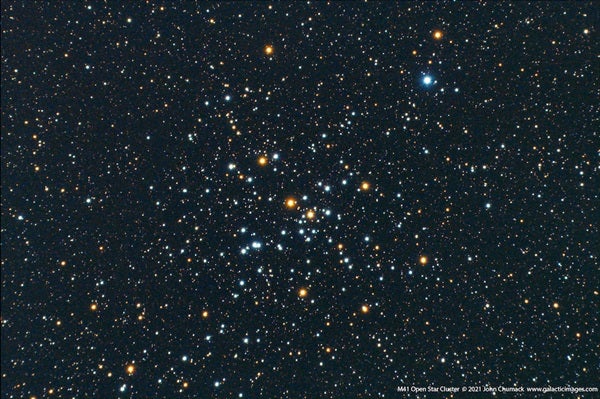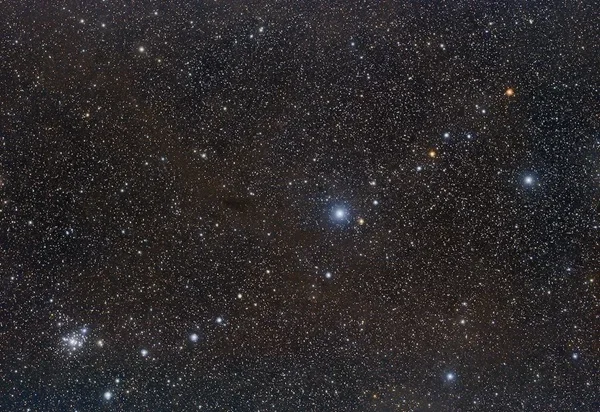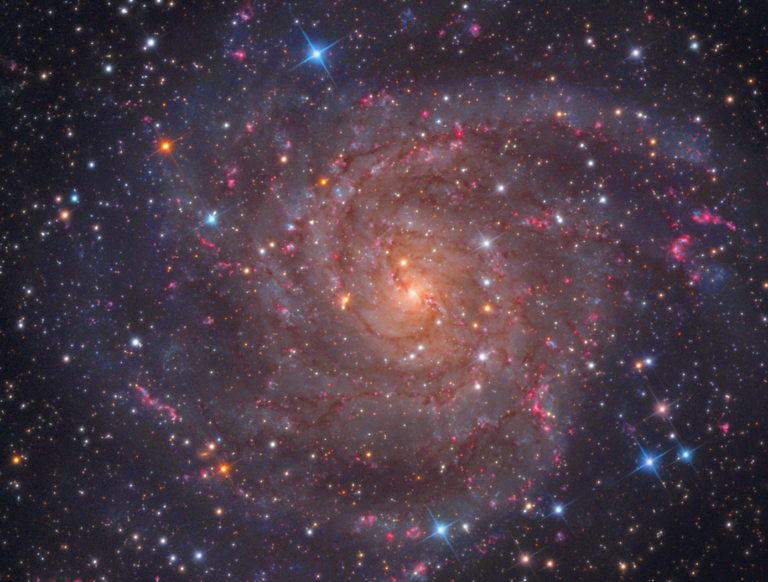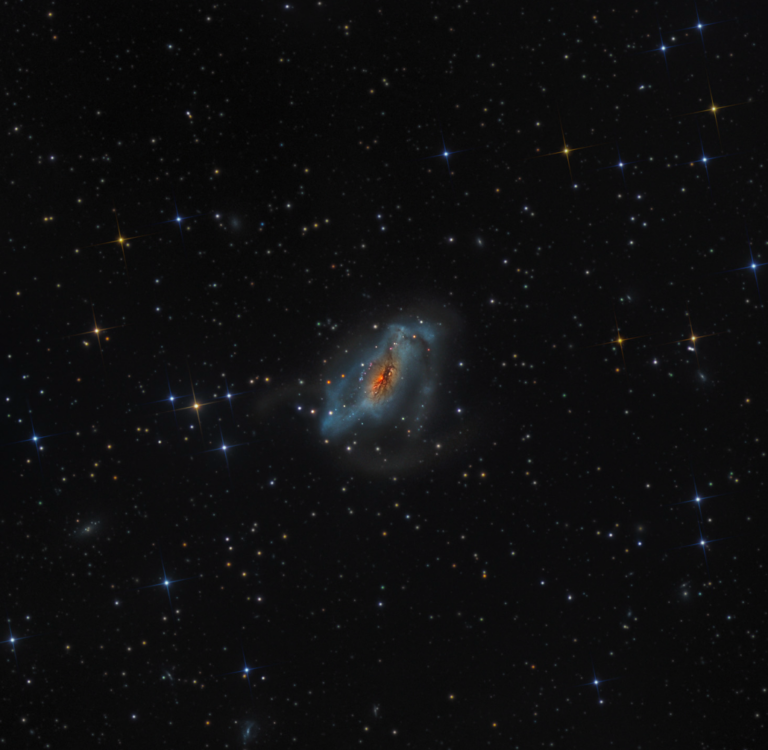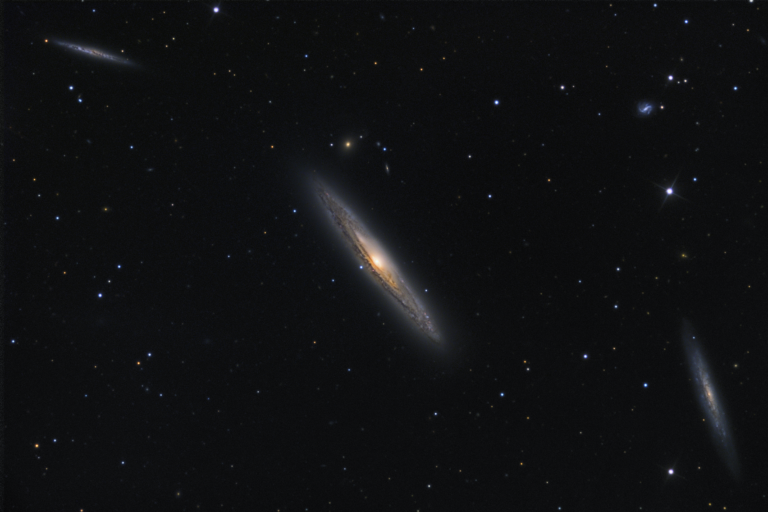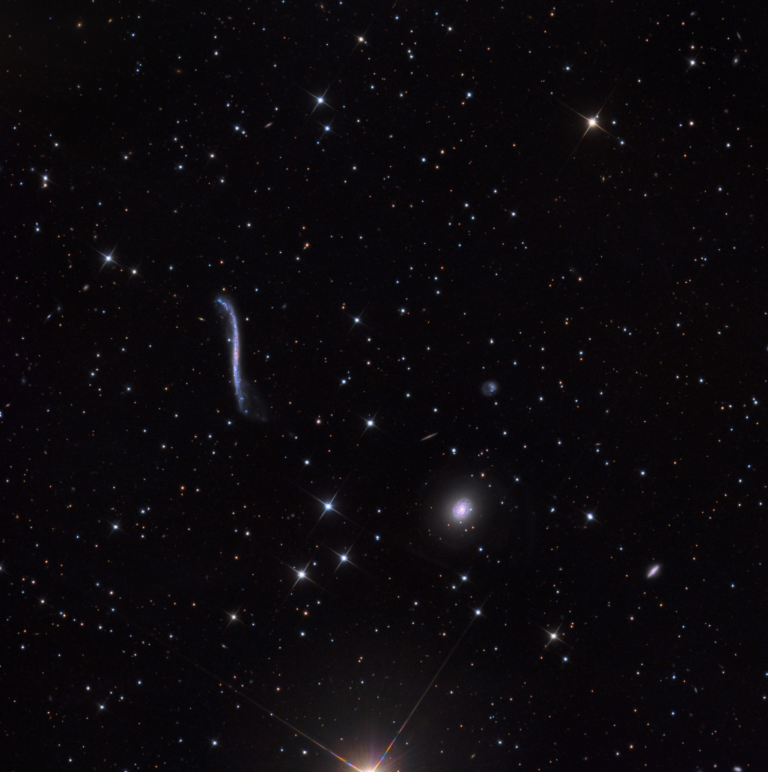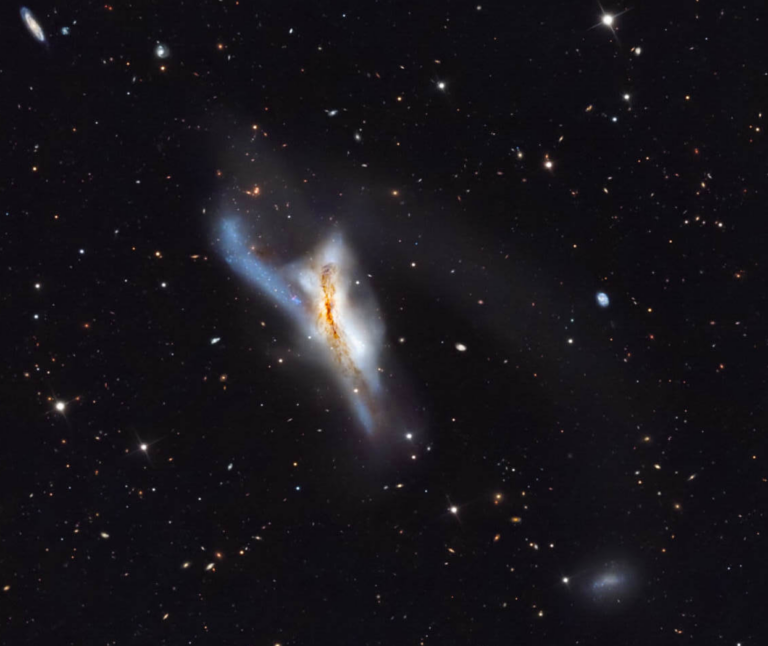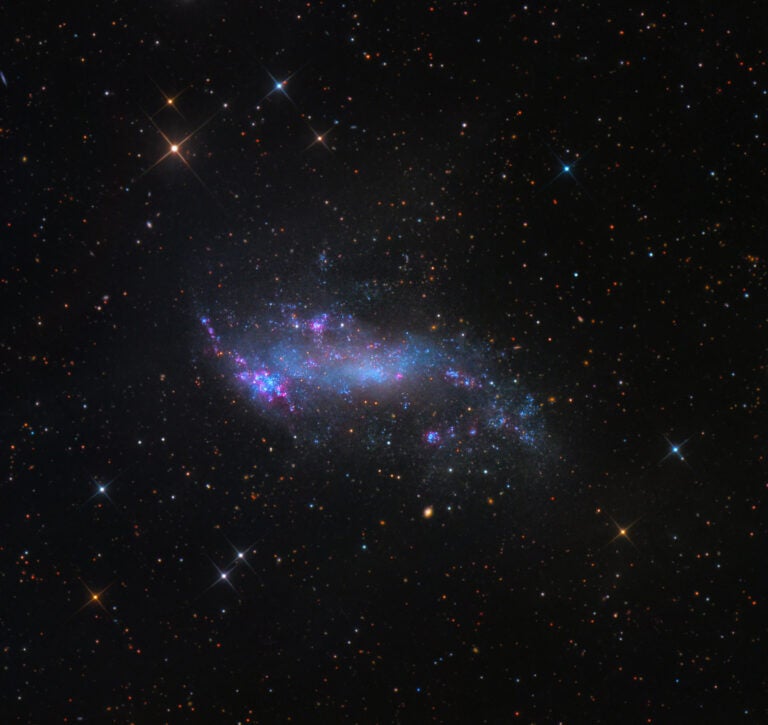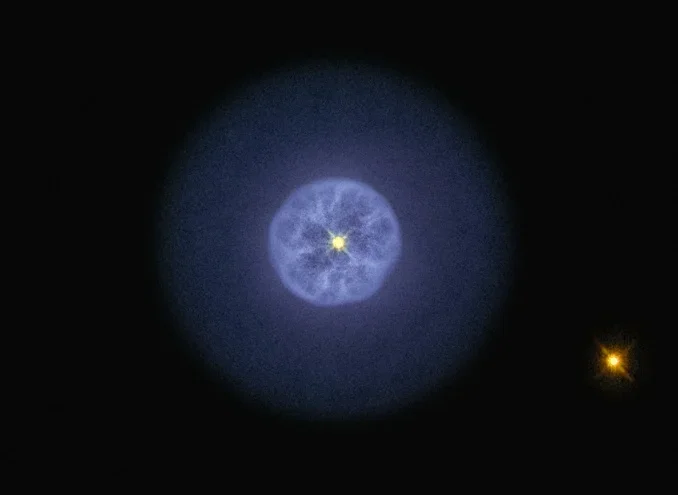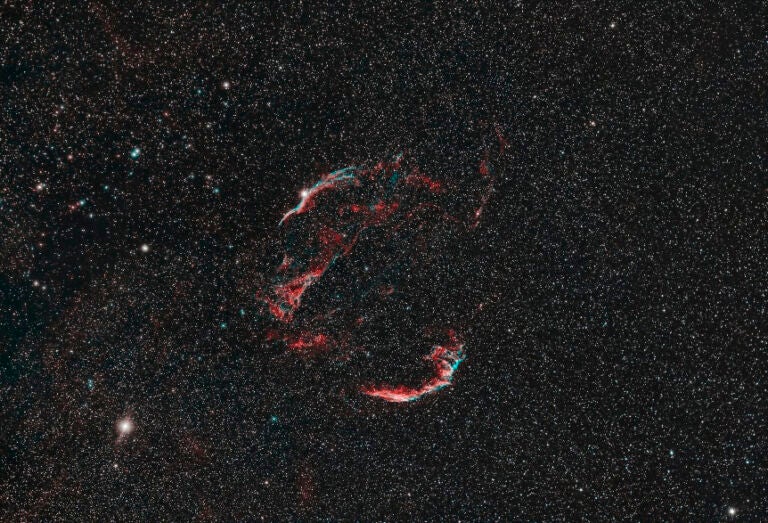The dazzling 4.5-magnitude open star cluster M41 dangles in Canis Major some 4° south of Sirius, the brightest star in the night sky. From a dark site, the cluster shines to the unaided eyes as a misty glow, like a metal tag on the collar of the celestial Dog.
M41 may have been identified by Aristotle, who described a star with a tail in the Dog — not surprising coming from a man who took a shining interest in comets. Today, the cluster appears to unaided eyes exactly as he described: a circular form with a dim extension to the north.
The cluster lies about 2,300 light-years distant and is 240 million years old. There is little intervening dust to affect its appearance, so its 100-odd stars shine with uncommon purity. At least three of them are 7th magnitude and should be within range for sharp-eyed, naked-eye observers. Handheld binoculars will resolve about a dozen members. Roughly 50 of its stars shine between 7th and 13th magnitude, putting them within reach of small- to moderate-sized telescopes.
M41’s stars will fill a telescopic field of view 30 percent larger than the Full Moon. Look for a striking reddish star at the heart of the sprawling cluster, with streams of irregularly bright suns curling outward. The view is best at low power. Larger-aperture telescopes will reveal the presence of many red (or orange) giant stars; the hottest star is of spectral type A. Up to 80 percent of its stars may be binaries. While we cannot see most of these, many of the cluster’s visible stars do form pairings.
Make sure to explore Astronomy’s full list of 101 cosmic objects you must see. New entries will be added each week throughout 2022.
To get the latest astronomical news and observing content delivered directly to your door, subscribe to Astronomy magazine today!

